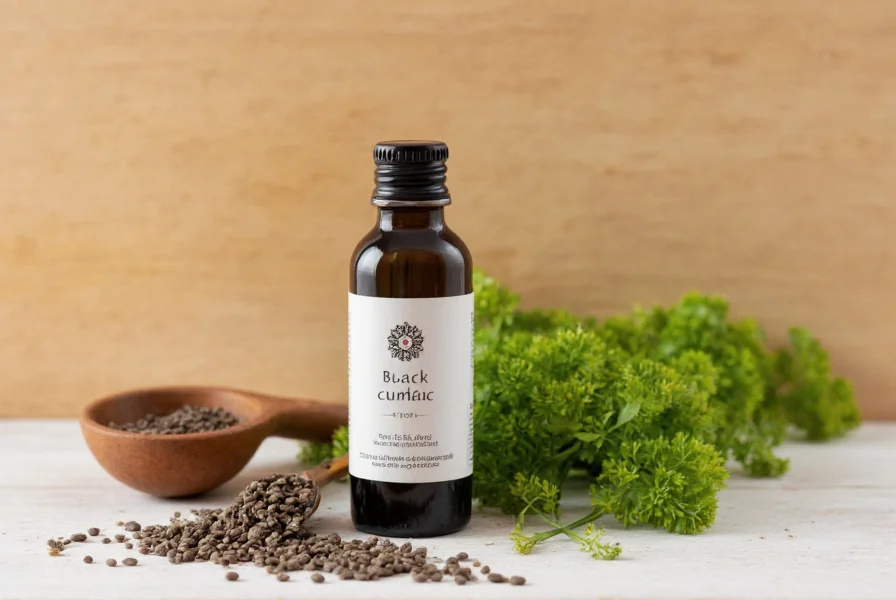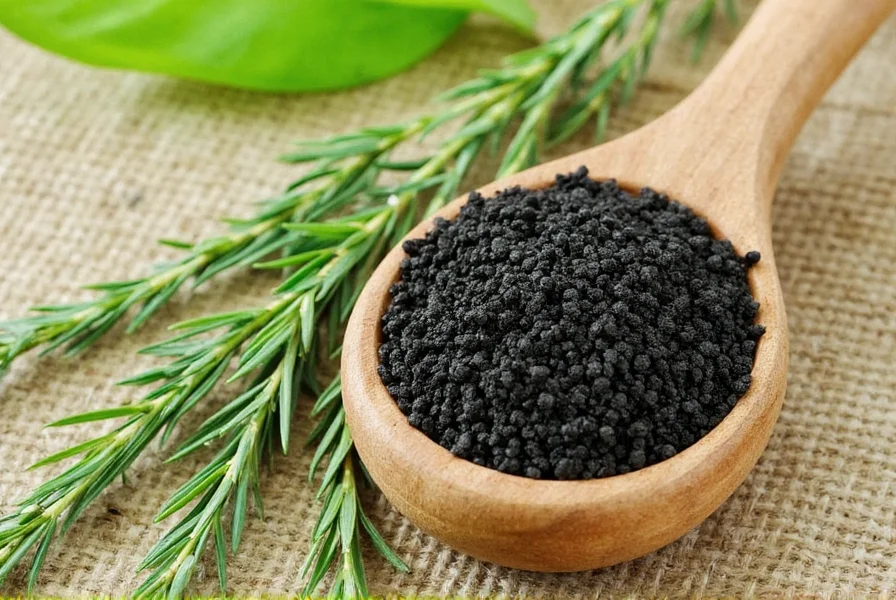Black cumin, scientifically known as Nigella sativa, has been used for centuries across Middle Eastern and South Asian cultures for both culinary and wellness purposes. This small black seed, also called kalonji or black seed, contains thymoquinone—the active compound responsible for many of its studied health benefits. Understanding proper usage methods ensures you maximize benefits while minimizing potential risks.
Understanding Black Cumin Forms and Their Applications
Black cumin comes in several forms, each with specific usage considerations. Selecting the right form depends on your intended purpose—whether culinary, therapeutic, or topical application.
| Form | Recommended Daily Amount | Best Applications | Storage Tips |
|---|---|---|---|
| Whole seeds | 1-2 grams (about 1-2 tsp) | Cooking, tea preparation | Airtight container, cool dark place (6-12 months) |
| Cold-pressed oil | 1-2 teaspoons | Therapeutic use, topical application | Refrigerated after opening (3-6 months) |
| Standardized supplements | Follow label instructions | Targeted health support | As directed on packaging |
Culinary Uses of Black Cumin
Black cumin seeds add a distinctive nutty, slightly peppery flavor to dishes. Unlike regular cumin (Cuminum cyminum), black cumin has a more complex profile with subtle onion-like notes.
Effective cooking techniques for how to use black cumin seeds:
- Dry toasting: Heat seeds in a dry pan for 1-2 minutes until fragrant but not burnt—this enhances flavor compounds
- Tempering: Add seeds to hot oil at the beginning of cooking to release flavors into the dish
- Finishing touch: Sprinkle lightly toasted seeds on finished dishes like naan, flatbreads, or roasted vegetables
- Infused oils: Combine with olive oil and let sit for 24 hours for culinary applications

Therapeutic Applications and Proper Dosage
Research suggests black cumin may support immune function, respiratory health, and metabolic markers when used appropriately. However, dosage varies significantly based on the intended benefit.
Science-based usage guidelines for how to take black cumin oil:
- General wellness: 1 teaspoon of cold-pressed oil daily, preferably with food
- Respiratory support: 1-2 teaspoons daily during cold season, often combined with honey
- Metabolic health: Studies typically use 2-3 grams of seed powder or equivalent oil daily
- Digestive aid: 1/2 teaspoon oil before meals for occasional digestive discomfort
For black cumin tea preparation, crush 1 teaspoon of seeds and steep in 8 ounces of hot water for 10 minutes. Strain before drinking. This traditional method effectively extracts water-soluble compounds.
Safety Considerations When Using Black Cumin
While generally recognized as safe, black cumin requires careful usage in certain situations:
- Pregnancy: Avoid therapeutic doses as high amounts may stimulate uterine activity
- Medication interactions: May enhance effects of blood pressure medications and diabetes drugs
- Allergies: Those sensitive to plants in the Ranunculaceae family should exercise caution
- Topical use: Always perform a patch test with diluted oil before widespread application
Long-term use of high doses (more than 3 grams of seed daily) hasn't been extensively studied. Most clinical trials use black cumin for periods of 8-12 weeks with positive safety profiles.
Traditional vs. Modern Usage Methods
Traditional Middle Eastern and Ayurvedic practices often combine black cumin with complementary ingredients:
- Habba Sauda: Ancient Egyptian formula mixing black cumin oil with蜂蜜 (honey) for immune support
- Golden milk variation: Adding black cumin to turmeric milk for enhanced anti-inflammatory effects
- Respiratory blends: Combining with fenugreek and ginger for traditional chest rubs
Modern applications focus on standardized extracts with verified thymoquinone content, typically ranging from 0.5% to 3% depending on the product. When learning how to use black cumin effectively, understanding these different approaches helps you select methods appropriate for your needs.
When to Consult a Healthcare Provider
Before incorporating black cumin into your wellness routine, consult a healthcare provider if you:
- Take medications for diabetes, hypertension, or blood clotting
- Have upcoming surgery within 2 weeks (may affect blood sugar control)
- Are pregnant or breastfeeding
- Have autoimmune conditions
- Experience persistent health issues requiring professional diagnosis
Quality black cumin products should clearly state the source, processing method, and thymoquinone content. Look for cold-pressed, organic oils stored in dark glass bottles to preserve potency—a crucial factor when determining how to use black cumin oil properly.
Practical Tips for Daily Incorporation
Integrating black cumin into your routine doesn't need to be complicated. These practical methods for how to use black cumin seeds daily work for most lifestyles:
- Mix 1/2 teaspoon oil into morning smoothies
- Add crushed seeds to salad dressings
- Stir into yogurt with honey for a wellness booster
- Combine with warm milk before bedtime for relaxation
- Use as a spice in homemade flatbreads or crackers

Frequently Asked Questions
Can I use black cumin seeds directly without oil extraction?
Yes, whole black cumin seeds can be used directly. For optimal absorption of active compounds, lightly toast and crush the seeds before consumption. Whole seeds provide fiber and different nutrient profiles compared to oil, making them suitable for culinary use and digestive support.
What's the best time of day to take black cumin oil?
For most people, taking black cumin oil with breakfast provides optimal absorption and minimizes potential digestive discomfort. If using for respiratory support, evening consumption may be more beneficial. Always take with food to enhance absorption of fat-soluble compounds and reduce gastrointestinal effects.
How long does it take to experience benefits from black cumin?
Most studies show measurable effects after 4-8 weeks of consistent daily use. Some people notice digestive improvements within days, while immune and metabolic benefits typically require 6-12 weeks of regular consumption. Individual results vary based on health status, dosage, and product quality.
Can black cumin oil be applied to the skin for hair growth?
Yes, diluted black cumin oil (mixed with carrier oil like coconut or jojoba at 1:3 ratio) can be massaged into the scalp. Research suggests it may support hair health due to anti-inflammatory properties, but results vary. Always perform a patch test first and avoid undiluted application which can cause irritation.
Is there a difference between black cumin and regular cumin?
Yes, black cumin (Nigella sativa) and regular cumin (Cuminum cyminum) are completely different plants. Black cumin seeds are smaller, black, and have a more complex flavor profile with medicinal properties primarily studied for immune and respiratory support. Regular cumin is larger, brownish, and used mainly as a culinary spice without the same therapeutic research backing.











 浙公网安备
33010002000092号
浙公网安备
33010002000092号 浙B2-20120091-4
浙B2-20120091-4